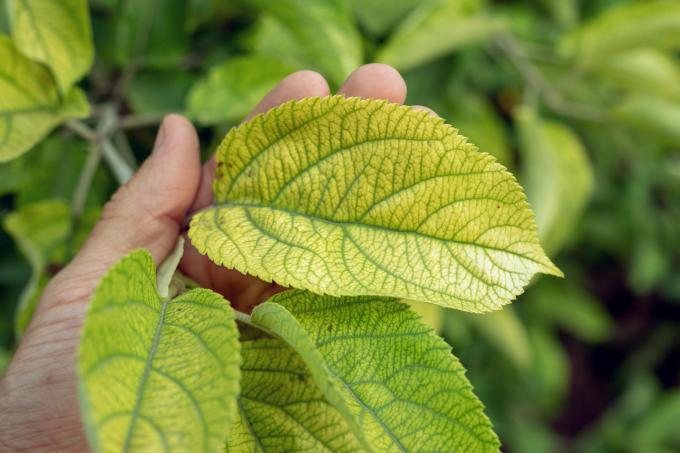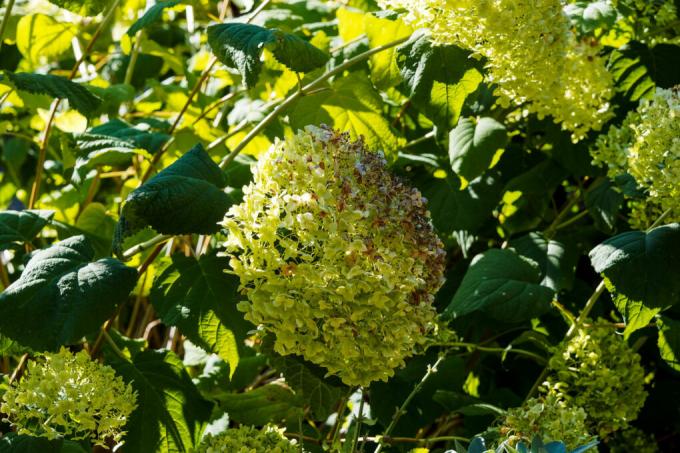AT A GLANCE
Hydrangeas often lose their leaves prematurely due to wrong location, care mistakes or diseases and pests. Improve the site, optimize care and treat diseases or pests specifically to stop leaf loss.
When do hydrangeas lose their leaves?
Hydrangeas (Hydrangea) thrive as deciduous shrubs. In autumn the trees lose all their leaves, because it is a matter of life and death. Hydrangeas can only survive the winter if they are leafless.
also read
Dropping temperatures and shorter days signal to hydrangeas that winter is just around the corner. The shrubs transfer leafy greens (chlorophyll) and nutrients to their roots and cut off the water supply to the leaves. Then the leaves wither and fall to the ground. New leaves sprout happily next spring.
What are common causes of premature leaf loss?
Leaf shedding in spring or summer is an important indication that your hydrangea is not doing well. These are the most common causes when hydrangeas lose their leaves prematurely:
- Wrong location: direct sunlight.
- Care mistakes: drought stress, waterlogging, lack of nutrients, frost damage.
- Diseases and pests: chlorosis, iron deficiency, fungal infection, aphids, spider mites.
Wrong location causes leaf drop - what to do?
For optimal, healthy growth, hydrangeas prefer one partially shaded location and acidic substrate. Sudden exposure to sunlight after clearing pot hydrangeas will cause sunburn and leaf loss. If hydrangeas in the bed are permanently exposed to the blazing sun, the shrubs will shed their leaves to protect themselves. This is to do:
- After clearing out, allow pot hydrangeas to acclimatize outside in a shady spot for 14 days in spring.
- Transplant bedding hydrangeas to one semi-shady Location with a pH of 4.0 to 6.0.
Hydrangeas lose leaves due to care mistakes - what to do?
The care of hydrangeas is shaped by a high water and nutrient consumption and a conditional winter hardiness. If there are deficits here, the flowering bushes throw off their leaves indignantly. You can stop premature leaf fall with these countermeasures:
- Cause of drought: Water bed hydrangeas thoroughly, immerse pot hydrangeas in rainwater.
- Cause of waterlogging: water or transplant bed hydrangeas more sparingly, repot pot hydrangeas.
- Cause of nutrient deficiency: weekly from March to early August fertilize with liquid hydrangea fertilizer.
- Cause Frost damage: Bedding hydrangeas with straw mulch as winter protection, overwinter pot hydrangeas frost-free, protect against late frost damage with a fleece hood.
Leaf loss due to diseases and pests - what to do?
If hydrangeas are weakened by location problems or care mistakes, diseases and pests have an easy time. Depending on the cause are the first symptoms light green leaves (chlorosis, iron deficiency, nitrogen deficiency), fungal leaf coating (fungal infection) or mottled leaf spots with curled leaf edges (pests). This helps:
- Cause of chlorosis as a result of iron deficiency: water Epsom salt or aluminum sulfate (alum), alternatively transplant into acidic soil.
- Cause of nitrogen deficiency: foliar fertilization with nitrogen fertilizer, e.g. B. Urea fertilizer or nettle manure.
- Cause of fungal infection: Treat hydrangea with organic fungicide, cut and thin out every year.
- Cause aphids or spider mites: fight pests with soap and alcohol solution.
Tip
Evergreen plant partners compensate for leaf loss in winter
Unsightly gaps in the wintry hydrangea bed don't have to be. You can compensate for the seasonal loss of leaves decoratively by combining hydrangeas with evergreen plant partners. Recommended hydrangea neighbors are alpine roses (Rhododendron), boxwood (Buxus), bamboo (Fargesia) and evergreens ornamental grasses, How pampas grass (Cortaderia selloan), sedges (Carex) or switchgrass (Panicum virgatum).








